For many car manufacturers, the complete acoustic modeling design of a car is still a dream. However, acoustic simulation methods are becoming more widely used and are becoming an important design tool to reduce development time.
This article refers to the address: http://
Acoustic modeling is often misunderstood as a magic tool that solves all problems. In fact, so far, acoustic and vibration modeling can only provide important recommendations rather than exact answers, and must also have the concept of using them as tools for problem solving during development and prototyping.
Because it is less well believed, all acoustic problems of the vehicle are not taken into account during the design phase, thus causing acoustic problems to occur at the prototype or later. If the experimenter can get the FEM (Finite Element Method) model, the acoustic problem can be considered from the beginning; and if the designer can understand the true meaning of a measurement report, the problem is more easily solved. Therefore, acoustic modeling should be an additional tool that combines prototyping and problem-solving, and the related processes can follow the following principles.
In the design phase: 1. Obtain a simplified acoustic FEM model; 2. Under the estimated input force, use BEM or SEA method to estimate the noise level; 3. Calculate whether there will be serious problems in the design phase.
In the prototype phase: 1. Obtain experimental data and isolated noise problems from the prototype; 2. Obtain the cyclic model of each problem and check the input force amplitude; 3. Try possible solutions and simulate the expected results; 4. Test applied The solution on the prototype; 5. Use the experimental data to complete the solution.
Design method
The following is a case cited from the Vibro-Acoustics Science Inc. Application Note, which describes the application of the AUTOSEA simulation software to in-vehicle noise (see Figure 1).
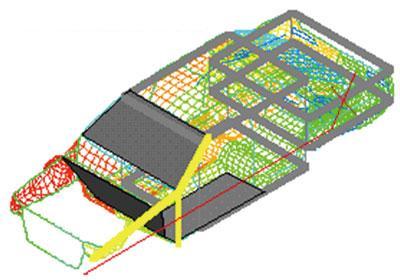
Figure 1 AUTOSEA model of a vehicle with subsystems
In terms of interior noise, typical problems are: in-vehicle noise levels; noise sources and transmission paths; and how to reduce noise levels. In order to answer the above questions, it is necessary to introduce the vehicle's FEM model. This is a typical coarse mesh model of the "concept phase", which will probably generate 150,000 units, of course, the number of units needs to be reduced to about 50,000. Simplified models must be revised to resolve certain issues and then check to see if they still retain the original features.
It is now possible to evaluate the noise level of multiple receiving positions in the vehicle with a simplified model through a sonic method (based on the frequency range of interest). There are two methods to choose from: FEM-BEM (Finite Element and Boundary Element) method with frequency limit up to 200Hz and SEA (Statistical Energy Analysis) method of 200Hz and above. The FEM-BEM method can be applied to structural propagation and airborne path applications, but this method becomes complicated and requires too many cells when the model density rises rapidly, and SEA gives good results when the model density increases. .
To identify the source of vibration or noise and the path of the transmission, the relevant technology must be used in conjunction with the FEM-BEM method, so that noise reduction techniques may yield results. The SEA method is based on the energy transfer calculation to identify the contribution of each source and the efficiency of the acoustic transmission path (see Figure 2).

Figure 2 SEA network
By analyzing one by one, complex problems can be solved more effectively. Here we show the use of AUTOSEA in specific situations where car roof noise (produced by pneumatic pressure) is considered.
First, we import the FEM model and store the material and beam section properties in a database, then simplify the geometry complexity by creating only the NASTRAN canopy unit and all of the SEA substructures (except for the windshield visible). We added a curved plate to the SEA model to represent the canopy.
1. Collect the canopy, windshield and internal cavity and observe the modulus of the band as the acoustic cavity increases very quickly.
2. Describe the wavenumber of the selected subsystem and observe that the coincidence frequency of the glass is much lower than that of the canopy. In the wide frequency range, the windshield is an obvious radiator.
Connecting the canopy and the windshield subsystem, the angle is close to normal, so energy can only be transmitted through the moments. Connecting the canopy and the internal subsystem, the radiation efficiency of the ceiling panel depends on the fixed boundary (such as the general baffle and the canopy lining to increase and decrease the radiation efficiency respectively). The effect of the lining of the canopy on the radiation efficiency can be obtained by analyzing the simulation by the SEA method or by introducing the data of the test into the model.
A power source is connected to the canopy subsystem to replace the wind (pneumatic) pressure source. The spectrum of the pneumatic pressure can be determined by wind tunnel testing or road test data, or as a default spectrum. The input of energy into the canopy is due to the fact that the wind noise is very large at low frequencies and is rapidly reduced by the divergence of the number of structural waves and the number of convective waves. Note that the other sources of vibration noise (see Figure 3) of the model are the engine noise transmitted by the structure (represented by the vibration measured by the vehicle's front rail) and the tire noise transmitted by the air (the diffuse sound measured by the bottom surface of the underbody) The pressure level is expressed).
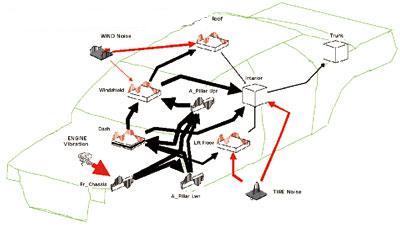
Figure 3 Vibration noise source
If you want to solve the above-mentioned network to obtain predictable A-weighted sound pressure values ​​in cars, trucks, vehicle bottoms, windshields and canopies, then you may have to notice that the higher measurement level of A-weighted sensors is applicable. At frequencies above 500 Hz. If you look at the energy input into the vehicle (for multi-vibration noise sources), you will find that the tire noise occupies a frequency range of 250 to 1 000 Hz, but in the higher frequency range, the windshield should be responsible for the noise inside the vehicle. It is. Therefore, we now have to understand what causes the windshield to vibrate.
The first way is to “source align†by freezing the internal sound pressure, then disconnect the wind noise source and the tire noise source and re-solve all the problems. The results show that the high frequency radiation of the windshield into the vehicle is caused by structural excitation caused by engine vibration.
The wind noise source and the tire noise source are reconnected (the input of the bottom plate mass method is 0.73 m2 and 4.5 kg), and the related problems are solved again to obtain the energy flow at 2 000 Hz. As expected, the windshield and instrument panel are the two main sources of noise in the car, but now we also know the information about the structural path transmitted through the upper and lower struts.
The tire noise transmission in the frequency range of 500 to 2 000 Hz can be reduced by adding a floor mat. But to characterize the floor mat, a 3-layer sample must be created in the database and added to the tire noise and the connector inside the car. The maximum effect (within the desired band) can be achieved by testing and adjusting the composition of this component. Double wall resonance effects may increase the in-vehicle sound pressure in certain bands, like 250 Hz. For this model, other designs can also be tested, for example: optimization of the floor mat; optimization of the internal sound absorption kit (also using the SEA method); modification of the structure of the front section of the vehicle to reduce high frequency noise caused by engine vibration .
Prototype approach
Once the prototype or parts of the prototype become available, some preliminary investigations can be carried out, and after obtaining typical data and frequency analysis ("listening" meetings of in-vehicle noise), standard measurement procedures can be carried out to Technical understanding and physiological experience combine to judge what is going on.
“Listening†is the key point. In fact, this feature can be added to measurements made with artificial false heads or BHM (Headed Measurement Microphones from HEAD Acoustics).
By paying attention to the noise activity represented by the time-frequency, the acoustic engineer was able to focus on some of the specific noises he noticed, using HEAD Acoustic's SQ-LAB to enhance the noise or suppress other false phenomena. For example, we can perform a synchronous listening comparison between the original recording and the filtered version of the same recording; filtering means reducing the amplitude of a particular component of the sound and sensing the change in sound. This sensory analysis is particularly useful for causal establishment, single noise source identification, and possible transmission path identification for structures & media.
It is common to test both the vehicle's acceleration and rest. The first step is usually to find problems in the test runway, such as the maximum A-level in the car, the key areas of the roaring phenomenon, the noise components, the speed and speed, and the sound quality. The listening and analysis of the drive test will provide a hint to the definition of the next "test plant", which includes identified problems, priorities, and investigation steps.
First, the acoustic model must be investigated so that the validity of the survey can be verified more quickly, and experimental verification can be more confidently advanced. Perhaps artificial modifications to the acoustic model do not always give the desired results, because the simulation tools are not perfect, but in any case, some suggestions for guiding the experiment can be obtained. It is this parallel investigation of acoustic models and prototypes (bilateral exchange of information) that accelerates the exploration of possible solutions and their verification of specific noise problems.
Modal analysis
In order to outline the guiding significance of the acoustic model to the experimental test, we will explain some representative tasks performed in the real case of a light truck.
The experimental modal analysis of the whole vehicle is not easy, and its inspection effect on the FEM model is not obvious. The problem is that the excitation of the suspension and the structure alternately show high damping for the high mode and nonlinearity for the low mode. Since the acoustic model report shows the type of problem that needs to be investigated, it is relatively more efficient to perform modal analysis on substructures (windows, canopies, doors, etc.). Try to make the excitation point close to the real situation, such as: engine or cockpit suspension, roof distribution force.
Acoustic mode
The experimental determination of the acoustic mode of the car has two purposes: one is to examine the theoretical mode to improve the acoustic model; the other is the damping measurement (the value of the experimental determination of the damping is attributed to the acoustic material, the instrument panel and the seat). The problem here is the acoustic excitation of the lumen, as some types of speakers used do not support any information that receives the excitation force, such as system input. One possibility is to use a standing wave tube, which is typically used to determine the acoustic properties of the material. One end of the standing wave tube is mounted on the window (open) and the other end is equipped with a speaker. The two microphones are mounted longitudinally. The energy flowing into the cabin from the other end of the tube can be derived by measuring the transfer function between the two microphones.
Input force
The road test is used for both noise and vibration measurements; the noise measurement is mostly concerned with the noise level inside the car, and the vibration measurement of the engine mount gives the amplitude and spectrum of the input force about the structure transmitting noise. By inserting the measured force into the acoustic model, it can be more accurately concluded that the noise calculation is based on the input vibration.
As for the airborne input force, such as the sound radiation of the engine, a different method (depending on whether the engine's FEM model is available or not) is quite necessary. In most cases, we can't know this at the design or prototype stage, so it's interesting to experiment to determine the acoustic model of the engine. This process is in fact self-resolving: the mapping of the assumed sound pressure level SPL to the hypothetical surface around the engine being tested can define the distribution of sound pressure and the relationship of phase to frequency. When the same distribution is given, an equal acoustic model of the sound source is obtained by lag least squares estimation.
An acoustic model of an engine requires 10 to 20 basic pistons with a radiated area (weighted engine geometry). This process is easy to understand, but it requires good skills in execution: first you must build a multi-channel measurement system (with enough microphones to get the phase relationship and some reference microphone positions); secondly, you must take a critical speed as static in the measurement. Conditions, and this information can only be derived from the analysis of the drive test and the "listening" meeting; in addition, this information can be inserted into the acoustic model of the vehicle as a true airborne input force, and the noise level in the car will be recalculated. .
Conclusion
The acoustic research of a vehicle is a team's work, not the application of personal feelings and expert opinions. There are several possible methods in the design or prototype phase, and there are many possible sources of noise in reality, but there is no single exact procedure that applies to each topic.
If you want to take full advantage of modern computing systems, you should follow some of the simplest methods to simplify complex total projects into separate problem groups. Don't get lost in thinking about the acoustics of a vehicle as a general problem, as the old saying goes, "Don't just see the forest without trees."
For example, from the beginning of the design phase, the simplification method should be introduced into the acoustic research of the vehicle, and when the prototype is available, the acoustic model must be adjusted in conjunction with the experimental data. Once the experiment identifies the noise problem, the possible solution should be run multiple times on the acoustic model adjusted with the experimental data, because the changes and verifications on the model are faster than changing and verifying on the prototype. And cheap.
From an acoustic point of view, the optimal results and rational development of the vehicle are based on the exchange of data between such experimenters and modelers.
Galaxy Note8+snap3D can take the place of the traditional VR box for smartphone. It is a bare-eye VR viewer in phone case shape ,If you cover it on smartphone screen,You can enjoy 3D Movies without VR headset. It's light weight, and easy to carry. You can evjoy 3D movies ,3D games everywhere you go. It`s much better than the traditional heavy VR headset, you will love it! It`s a very good choice for your friends as a gift!
HOW TO USE Galaxy Note8+ Snap3D AS A 3D SCREEN
The attached 3D screen on the Snap3D acts like 3D glasses.
To turn your smartphone into a 3D device, you need to first download the [Mplayer3D" application.
Then install the Snap3D on your smartphone screen and run Mplayer3D.
Enjoy the stunning stereoscopic 3D!




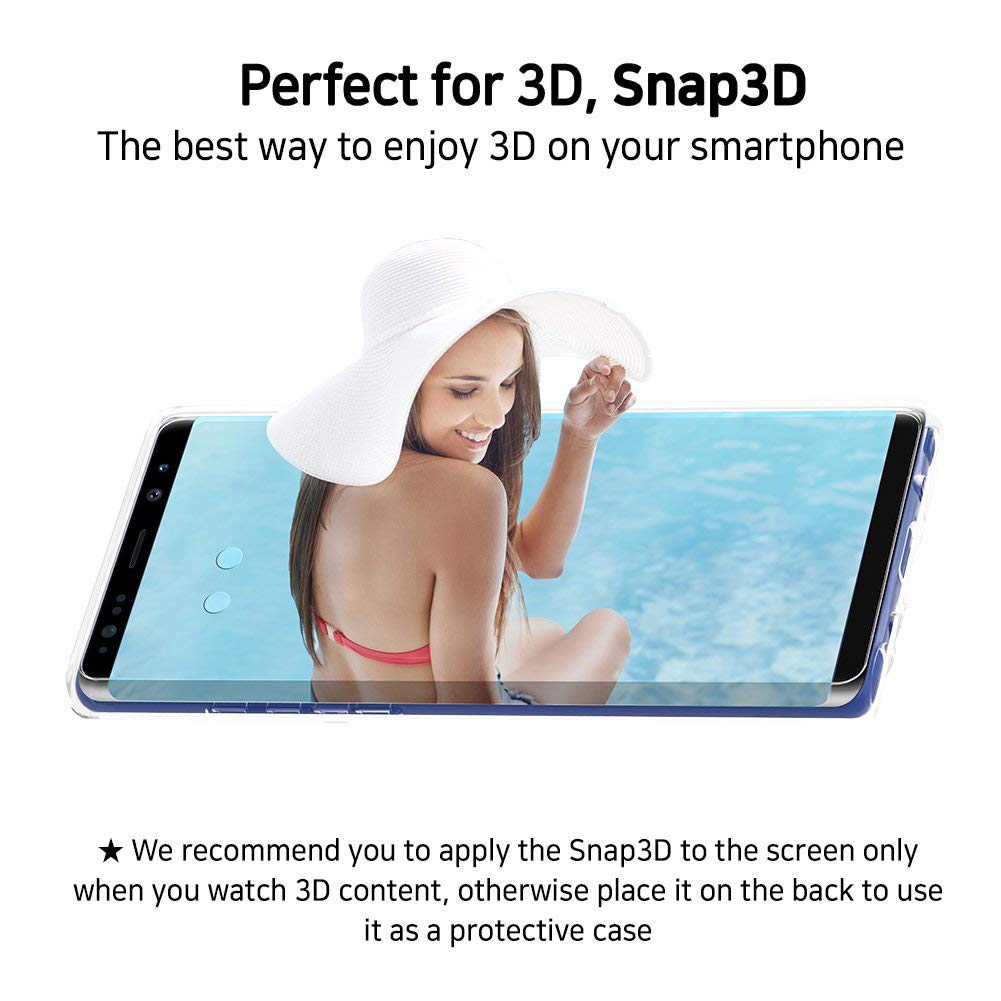
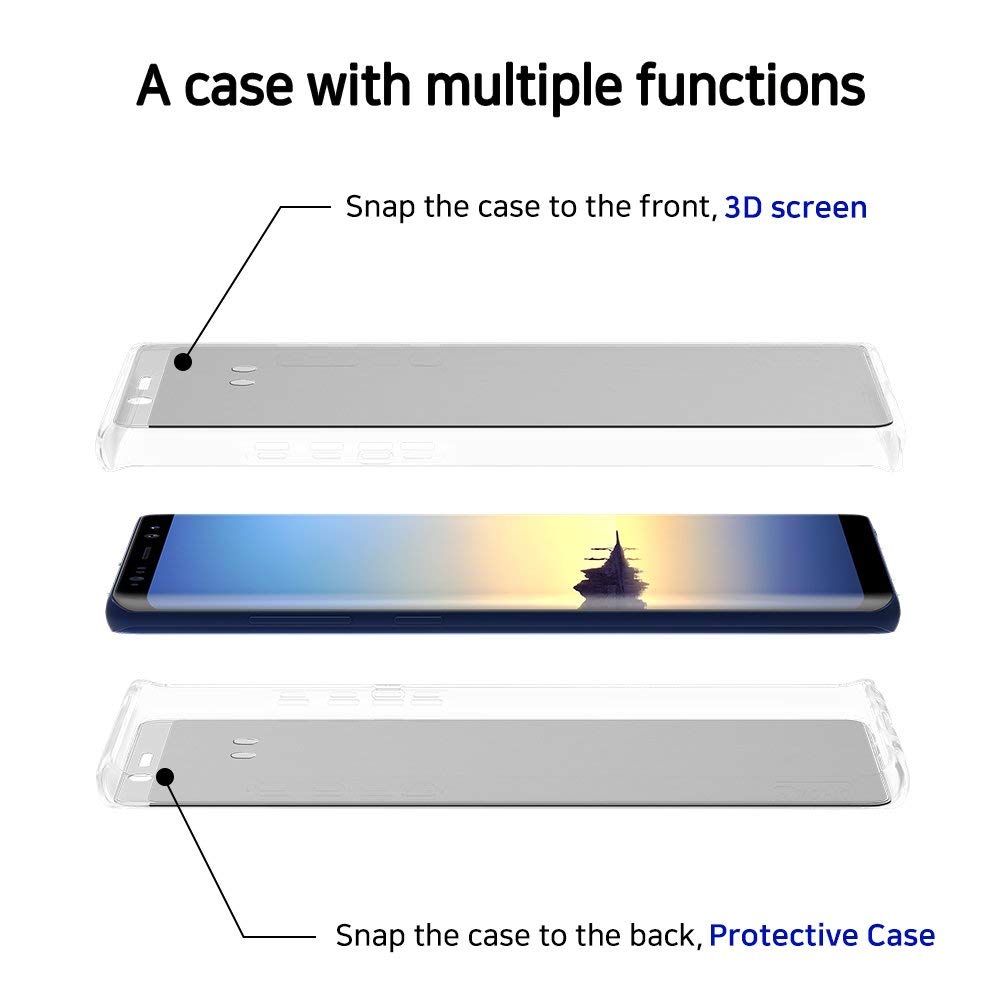
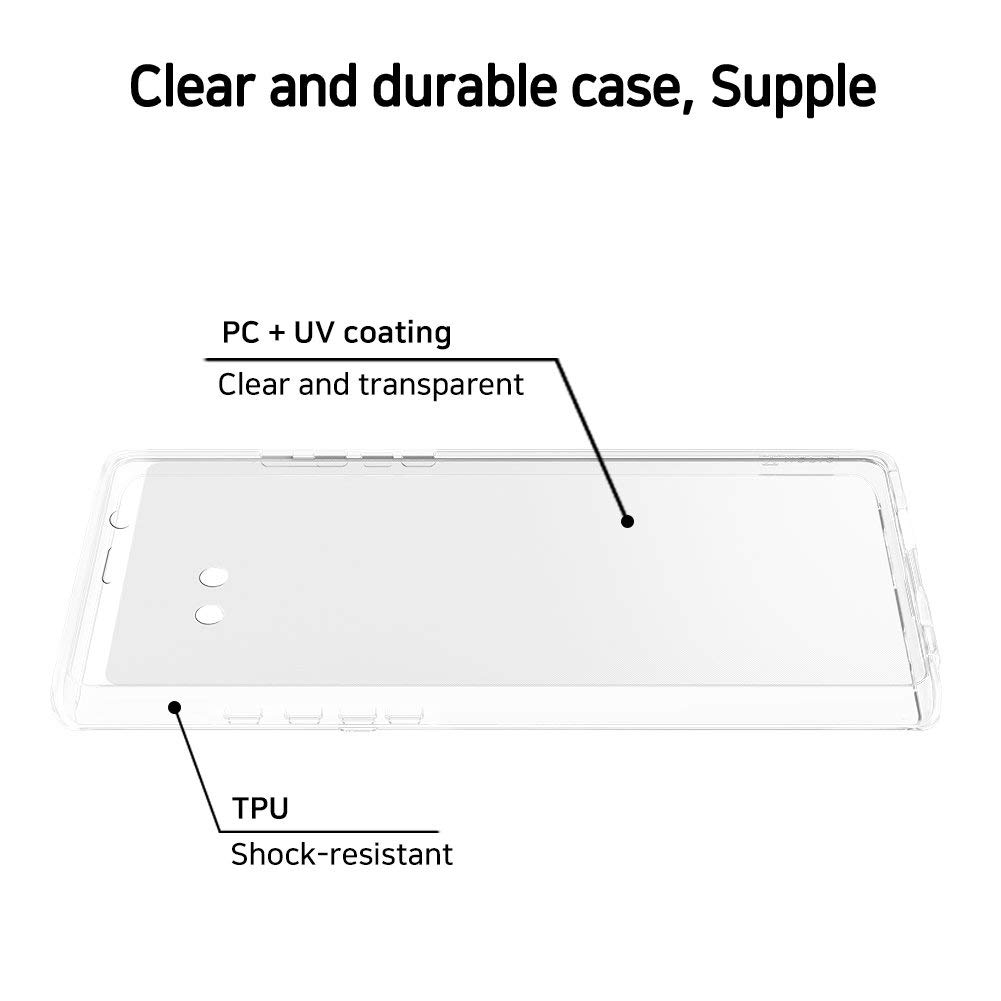
Galaxy Note8+ Snap3D
Galaxy Note8+ Snap3D,Snap3D For Galaxy Note8+,Galaxy Note8+ Snap 3D Viewer,Galaxy Note8+ Snap3D Case
iSID Korea Co., Ltd , http://www.isidsnap3d.com